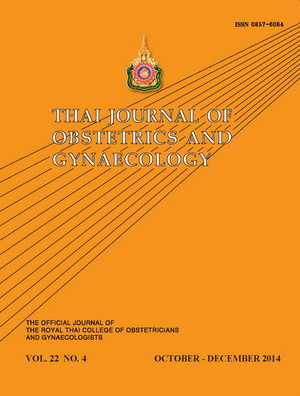The 11 Years-Experience in Vesicovaginal Fistula Management
Main Article Content
Abstract
Objective: To explore the selective use of intraoperative cystoscopy/dye test and treatment options for Vesico Vaginal fistula (VVF) in our institute.
Materials and Methods: From March 2002 to March 2013, thirty one patients of VVF were admitted in the Department of urology in our institute. 27 patients were repaired by transabdominal route while as 4 patients were managed conservatively. Out of the 27 patients, 19, 3, and 5 patients were operated by open, laparoscopic, and Robotic assisted laparoscopic repair respectively. Student’s t-test and Chi-square tests were used to evaluate the data. A p < 0.05 was taken as statistically significant.
Results: Most common aetiology was hysterectomy for benign conditions (80.06%). Most of VVF were supratrigonal in location (n=23) and 27 of the 31 VVFs were repaired by transabdominal route by standard O’Conor technique with omental interposition. A success rate of 96.29% was achieved after first repair by transabdominal route (p < 0.0001). Four patients with small intraoperative injury (< 5 mm) which were detected on intraoperative cystoscopy and dye test and were managed by Bilateral ureteric catheterization with 100% success (p = 0.005) at 6 weeks.
Conclusion: VVF resulting from difficult hysterectomy can be prevented by meticulous pelvic dissection with high anticipation of bladder injury. Use of intraoperative cystoscopy or methylene blue dye in bladder recognizes injury at the earliest and allows intraoperative repair which is almost always successful. Also robotic assistance to laparoscopy should be preferred when available due to its minimally invasive nature and advanced degree of freedom which makes complex suturing very easy especially in narrow pelvic cavity.
Article Details
References
2. BlandyJP, Badenoch DF, Fowler CG, Jenkins BJ, Thomas NW. Early repair of iatrogenic injury to the ureter or bladder after gynecological surgery. J Urol 1991;146:761-5.
3. O Connor VJ. Review of experience with vesicovaginal fitula repair. J Urol 1980;123:3679.
4. Arrowsmith SD. Genitourinary reconstruction in obstetric fitulas. J Urol 1994;152:403-6.
5. KrauseS, Hald T, Steven K. Surgery for urologic complications following radiotherapy for gynaecologic cancer. Scand J Urol Nephrol 1987;21:115-8.
6. Mraz JP, SutoryM. An alternative in surgical treatment of post irradiation vesicovaginal and rectovaginal fitulas:
the seromuscular intestinal graft (patch). J Urol 1994;151:357-9.
7. Mattingly RF. Acute operative injury to the urinary tract. Clin Obstet Gynecol 1978;5:123-49.
8. Goodwin WE, Scardino PT. Vesicovaginal and Ureterovaginal fistulas: A summary of 25 yrs of experience. J Urol 1980;123:370-4.
9. Lee RA, Symmonds RE, Williams TJ. Current status of genitourinary fitula. Obstet Gynaecol 1998;72:313-9.
10. Elkins TE, Surgery for the obstetric vesicovaginal fitula: A review of 100 operations in 82 patients. Am J Obstet
Gyneacol 1994;170:1108-20.
11. Tancer ML. Obsverations on prevention and management of vesicovaginal fitula after total hysterectomy. Surg
Gynecol Obstet 1992;175:501-6.
12. BissadaNK, Mc Donald D. Management of giant vesicovaginal and vesicourethrovaginal fitulas. J Urol 1983;130:1073-5
13. Wang Y, Hadley HR. Nondelayed transvaginal repair of high lying vesicovaginal fitula. J Urol 1990;144:34.
14. Williams G. The Addis Ababa fitula hospital: an holistic approach to the management of patients with vesicovaginal fitulae. Surgeon. 2007;5:54-7.
15. Woo HH, Rosario DJ, Chapple SR. The treatment of vesicovaginal fitulae. Eur Urol 1996;29:1-9.
16. Chapple C, Turner-Warwick R. Vesico-vaginal fitula. BJU Int. 2005;95:193-214.
17. Blaivas JG,Heritz DM, Romanzi LI. Early versus late repair of vesicovaginal fitulas: vaginal and abdominal
approaches. J Urol. 1995;153: 1110-2.
18. Hanash KA, Al Zahrani H, Mokhtar AA, Aslam M. Retrograde vaginal methylene blue injection for localization of complex urinary fitulas. J Endourol 2003;17:941-3.
19. Patel, Hiren; Bhatia, Narender Universal cystoscopy for timely detection of urinary tract injuries during pelvic surgery Current Opinion in Obstetrics & Gynecology: 2009;21:415-8.
20. Falk V, McLoughlin J, and Guthart G. Dexterity enhancement in endoscopic surgery by a computer controlled mechanical wrist. Min Inv Therapy Allied Tech 1999;8:235-41.
21. Melamud O, Eichel L, Turbow B, and Shanberg A. Laparoscopic vesicovaginal fitula repair with robotic reconstruction. Urology 2005;65:163–6.
22. Sundaram BM, Kalidasan G, and Hemal AK. Robotic repair of vesicovaginal fitula: case series of fie patients. Urology 2006;67:970–3.
23. Hemal AK, Eun D, and Tewari A. Nuances in the optimum placement of ports in pelvic and upper urinary tract surgery using the da Vinci robot. Urol. Clin. North Am. 2004;31:683–92.
24. Hemal AK, Kolla SB, and Wadhwa P. Robotic reconstruction for recurrent supratrigonal vesicovaginal fitulas. J Urol 2008;180:981-5.


